Engine Research and Development
Vibration Reduction
The R&D center analyzes and measures the vibration generated by the moving part and combustion pressure of the engine in operation, and finds the best technologies to reduce it. One major technology is to predict the vibration of engine using the measurement and analysis of vibration utilizing excited forces such as the inertia of moving parts and combustion pressure. Another one is to reduce the structural vibration of engine which is applied in the improvement of systems that optimize the natural frequency of the engine by structural shape alteration. Also Hanwha Engine has developed and supplies the ENVA to reduce the lateral vibration of engine.
-
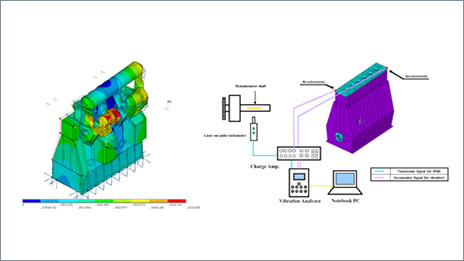
Technology for Analyzing and Quantifying Shaft Vibration
The sources of engine frame vibration as a result of exciting forces are the inertia of moving parts including crankshaft, connecting rods and pistons and the gas explosion pressure inside the combustion chamber. Hanwha Engine has applied computer analysis to predict the vibration of the engine frame, and the vibration measurement technique to verify analysis results and assess the vibration performance of various engine parts.
-
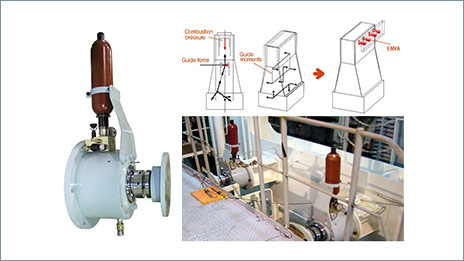
Structural Vibration Damping Technologies
Vibration caused by the inertia force of moving parts and combustion pressure can drop the safety factor of the engine frame and become the main source of engine noise. To improve the quality of engine, Hanwha Engine has modified the shapes of parts to avoid the resonant frequency and developed ENVA top bracing, a steel structure installed between the engine and hull side, to reduce the lateral vibration of engine.
Performance Enhancement
Engine technologies with high efficiency, lower fuel consumption and enhance overall eco-friendliness are developed through research on the combustion and performance analysis of engine and the flow characteristics of performance related parts. Major technologies include (1)the analysis and measurement of engine combustion and emissions in order to satisfy emissions standards; (2)the performance analysis for optimizing engine output, fuel consumption and other performance factors; and (3)the flow and cooling analysis for predicting the heat and flow properties of major performance parts.
-
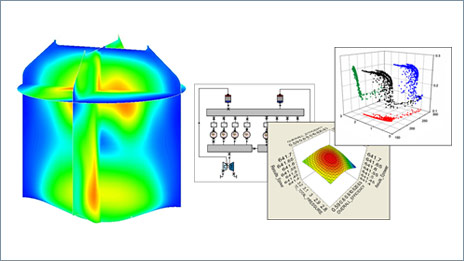
Combustion and Performance Technologies
The combustion process and characteristics inside cylinder directly affect the fuel consumption and exhaust emissions. Hanwha Engine applies CAE technologies for analyzing the combustion and performance of engine as well as for predicting emissions in order to develop high efficiency, lower fuel consumption and eco-friendly engine.
-
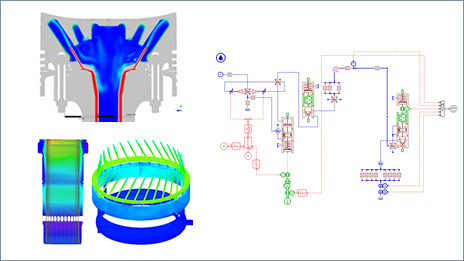
Flow and Hydraulics Technologies
The cooling and flow characteristics of moving parts including crankshaft, connecting rods and pistons play an important role in the efficiency and durability of the engine. Our expertise in flow and hydraulic analysis and measurement allow us to analyze and design the optimal cooling, lubrication and fuel injection systems for the reliable and efficient performance.
Structural Improvements
Key areas here include technologies related to engine frames, materials and lubrication.
-
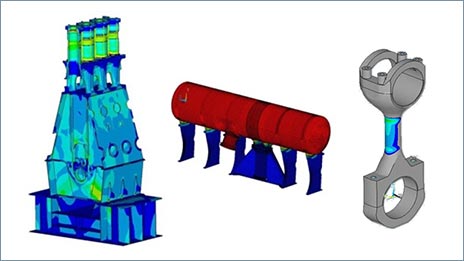
Structural Technologies
Structural analysis is used to predict stress distributions and optimize main component’s shape for finding most robust design. And we are also measured the stress level to verify the reliability of structural analysis results and build database during engine operation.
-
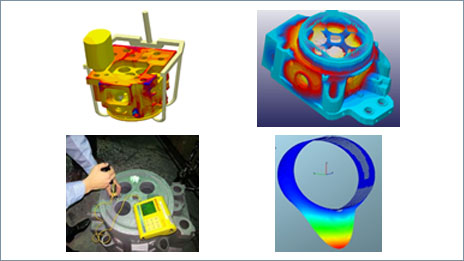
Materials & Lubrication Technologies
Material-related technologies cover the alloy design for large cast parts (impellers, valves) and casting analysis to ensure parts reliability at the time of their fabrication as well as the technologies necessary for localizing the materials used in core engine parts. Importantly, casting analysis is performed with computer simulations to minimize expenses at the initial stage of cast parts development. Analysis method reliability is also improving steadily through better measurement techniques. Lubrication analysis is used to evaluate lubrication characteristics of bearing and find compacted and optimized design of crankshafts, connecting rods and other moving parts.
Control (“Mecha-tronics”)
Hanwha Engine is localizing and upgrading various electronic control systems, which serve as the “brain” of the engine, and developing technologies to monitor engine status in real time and prevent breakdowns. One noteworthy achievement is Measutal, a wireless system for measuring crankshaft distortion and generating crankshaft alignment data, facilitating maintenance and repair work.
-
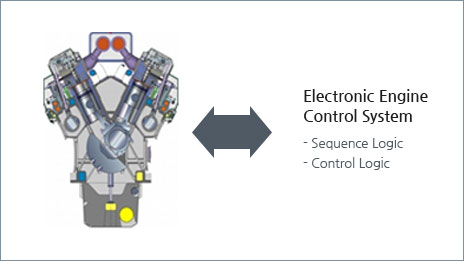
Electronic Engine Control System
Operation sequence logic is used when starting up and shutting down the engine, while speed control logic enables quieter engine operation. These basic technologies are applied in the process of localizing and upgrading electronic control systems.
-
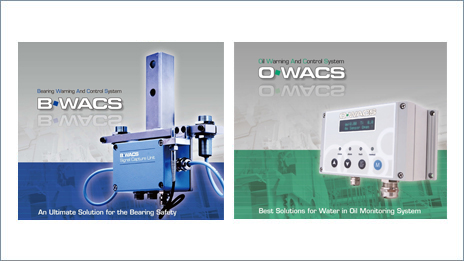
Diagnosis System Technologies
The engine diagnosis system is a technology that uses various sensor information to detect abnormalities in parts in advance. By changing from the existing Time-Based Maintenance (TBM) to Condition-Based Baintenance(CBM), the maintenance inspection cycle can be increased and costs can be dramatically reduced. Utilizing these technologies, B-WACS had been developed , which can diagnose abnormal wear of bearings, and O-WACS, which can diagnose moisture inside lubricant, as proprietary technologies and are applying them to engines.
-
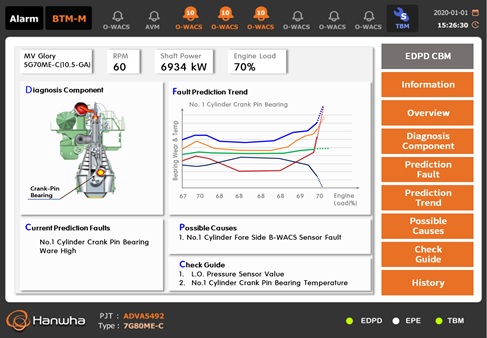
“Expert System” Technologies
By combining specialized engine technology and know-how, a total engine solution that integrates engine operation monitoring, performance evaluation, parts management, and abnormality diagnosis functions has been developing. This system is implemented integrated functions with eco-friendly equipment such as SCR and iCER, and is expanding the application of smart ships.
















